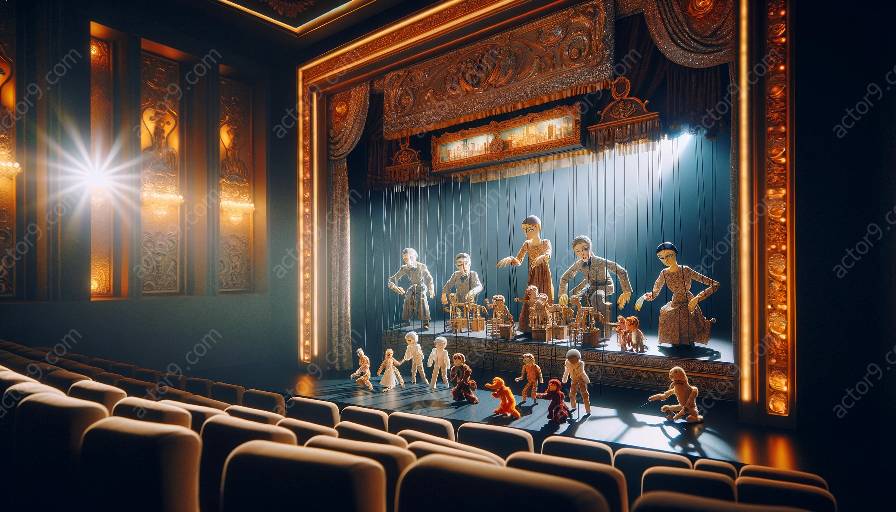Puppetry is an ancient art form that has captivated audiences for centuries. One of the key elements of puppetry is the use of different types of puppets, each with its own unique characteristics and history. In this article, we will explore the various types of puppets used in puppetry and their significance in the rich history of this art form.
Hand Puppets
Hand puppets, also known as glove puppets, are one of the most common and versatile types of puppets used in puppetry. These puppets are operated using the puppeteer's hand, which is inserted into the puppet's head or body, while the other hand controls the puppet's arms and gestures. Hand puppets can range from simple sock puppets to intricately designed characters with expressive features. They are often used in children's entertainment and educational performances due to their accessibility and engaging nature.
Marionettes
Marionettes, or string puppets, are puppets that are manipulated using strings or wires. They have a long history in puppetry and are known for their intricate movements and lifelike performances. Marionettes are suspended and controlled by strings attached to a control bar or hand-held device, allowing the puppeteer to create dynamic and expressive movements. The art of marionette puppetry requires skill and precision, and marionettes are often featured in traditional and classical puppetry performances.
Shadow Puppets
Shadow puppets are a unique form of puppetry that utilizes the interplay of light and shadow to create enchanting visual performances. These puppets are usually flat and made of translucent material, allowing them to cast distinct shadows when illuminated from behind. Shadow puppeteers use a light source and a screen to project the silhouettes of the puppets, often accompanied by music and storytelling. Shadow puppetry has been prominent in cultures across the world, and its captivating and evocative storytelling continues to enthrall audiences.
Rod Puppets
Rod puppets are controlled using rods or sticks attached to various parts of the puppet's body. The rods are manipulated to create movements in the puppet's limbs, head, and other features. Rod puppets can vary in size and complexity, from small handheld puppets to large, elaborate creations. They are commonly used in theatrical productions and are favored for their versatility and ability to convey a wide range of expressions and movements.
Bunraku Puppets
Bunraku puppets are a traditional form of Japanese puppetry that dates back to the 17th century. These puppets are large, intricately crafted, and operated by multiple puppeteers who work together to bring the puppet to life. Bunraku puppetry is known for its elaborate costumes, detailed movements, and emotional storytelling. The art of Bunraku has had a profound impact on Japanese culture and continues to be celebrated as a unique and cherished form of puppetry.
Ventriloquist Puppets
Ventriloquist puppets are unique in that they are designed to be operated by a ventriloquist, who provides the voice and character for the puppet. These puppets often have movable mouths and expressive features, allowing the ventriloquist to create the illusion of speech and interaction. Ventriloquism has been a popular form of entertainment for centuries, and ventriloquist puppets play a central role in comedic and theatrical performances, captivating audiences with their engaging and often humorous interactions.
These are just a few examples of the diverse and captivating types of puppets used in puppetry. Each type of puppet has its own rich history and cultural significance, contributing to the evolving art form of puppetry and its enduring appeal to audiences around the world.
Conclusion
Puppets have played an integral role in the history and development of puppetry as an art form. The diverse types of puppets used in puppetry, from hand puppets to marionettes, reflect the creativity and cultural influences that have shaped this captivating and enduring art. Understanding the different types of puppets and their significance helps us appreciate the depth and diversity of puppetry, and the enduring impact it has had on storytelling, entertainment, and cultural expression.


























